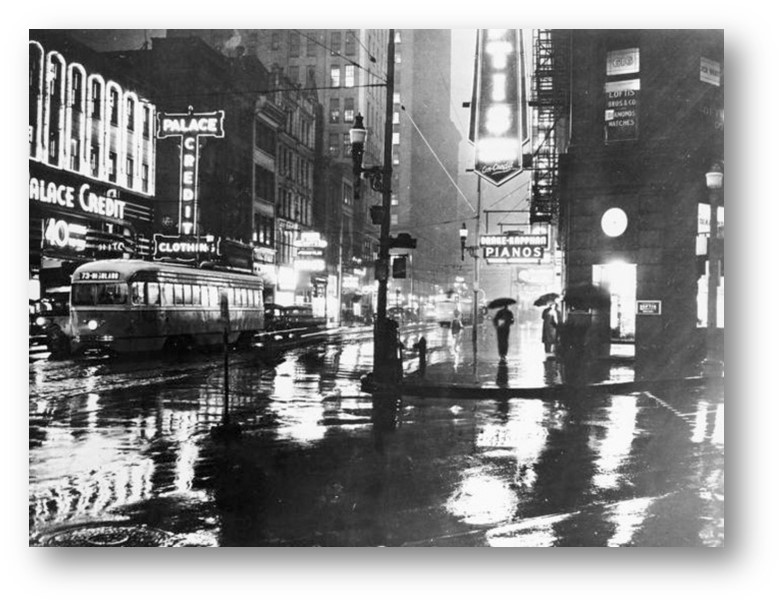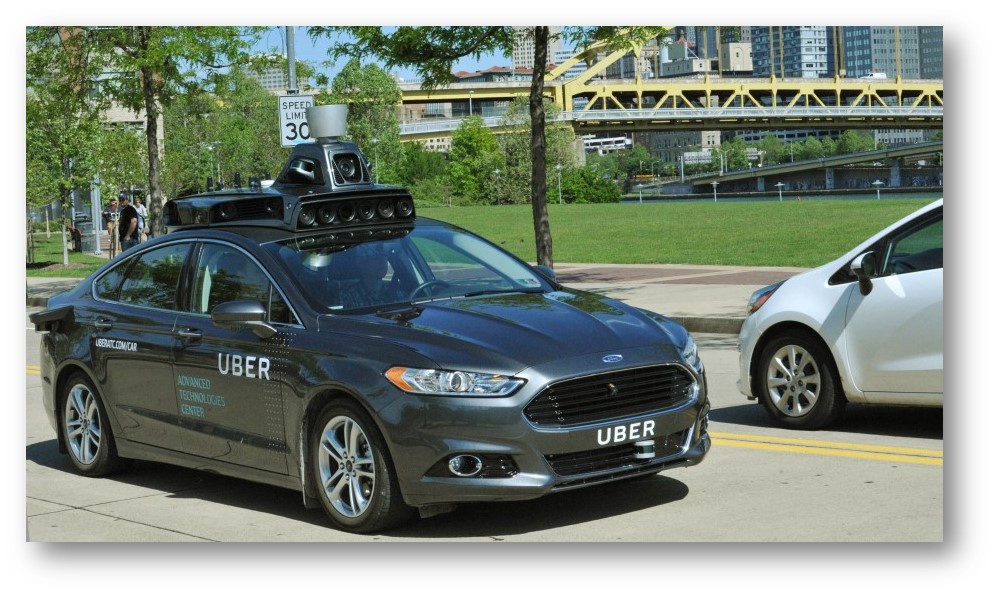How Pittsburgh Got Its Groove Back
A city on the rise, with an airport to match. A story in three acts
By Kristin Mageras
Published November 9, 2018
Read Time: 7 mins
Mention Pittsburgh to someone who doesn’t live here. Ask them what springs to mind. (Go ahead. We’ll wait.)
Steel city? Belching black smoke? Post-industrial wasteland? The Steelers?
On our travels, we hear that a lot. But aside from our sports teams (whose greatness is a constant), those images of Pittsburgh recall a different era, a time of high unemployment and low expectations. Perceptions are stubborn things.
Much has changed about Pittsburgh, but few people know it.
For more than a decade, Pittsburgh has been in the midst of a renaissance, a splendid revival that has transformed this 250-year-old poster child for the Rust Belt into a center of technology, banking, energy, health care and education.
At Pittsburgh International Airport, we know the back story all too well. Airports are a reflection of the cities they serve, and Pittsburgh’s decline in the 1980s and 1990s was the airport’s loss, too. The low point may have come in 2004, when US Airways dropped PIT as a hub and consolidated in Philadelphia.
As the gateway to a city on the rise, the airport today is transforming itself as well, with a $1 billion-plus Terminal Modernization Program, an 80 percent growth in nonstop destinations in the last two years, including three international connections, and a growing reputation as a viable and uncongested option for moving freight to and from North America.
“Pittsburgh is a region on the rise, but for a long time, the airport wasn’t keeping up. It was the missing piece to truly complete the regional renaissance,” said Allegheny County Airport Authority CEO Christina Cassotis. “We set a course to change that. Everything we do is focused on what’s best for the region and the airport. Our vision is to advance the region’s role as world leader and we’re doing it.”
This is the story of how Pittsburgh (and its airport) got its groove back, in three acts.

Smokestacks billowing smoke high into the Pittsburgh sky at the height of steel production in the region.
Act 1: Coal and Rivers
George Washington knew it. As a major in the British Colonial Army in the 1700s, the future father of our nation noted the rolling topography and three rivers that made this area a strategic transportation hub. The great reserves of coal discovered in the region would fuel the furnaces that eventually made more steel in World War II than Germany and Japan combined.
Many thought the industrial boom would never end. Yet as early as the 1940s, a few enlightened city leaders began to ask, “What happens if the steel industry goes away?”
Scoffed at by many, they nonetheless persisted and, as a result, took the first steps in cleaning up Pittsburgh’s air. It took a while, but they succeeded.
“In the 1970s, (Pittsburgh) no longer looked like ‘Hell with the lid off,’ as James Parton once stated, no streetlights turned on at noon, and you didn’t have to take extra white shirts to work, either,” said Bill Flanagan, chief corporate relations officer for the Allegheny Conference on Community Development, an organization that has been working for economic diversification and a better quality of life for all of its 75 years.
No sooner had Pittsburgh begun to clean up its act than the steel industry actually did collapse. The 1980s found Pittsburgh down on its luck: 18.3 percent jobless rate, and a population decline of a quarter million. (That’s one reason there are so many Steelers bars around the country and the world.)
“Pittsburgh’s economy fell off a cliff; arguably the worst setback suffered by any region in the United States in the second half of the 20th century,” said Flanagan. “The situation was so dire that regional leaders once again came together, this time not to improve the region but to save it.”

Downtown Pittsburgh at 3 p.m. circa 1943. Streetlights on due to smoke/smog from the industrial powerhouse that was Pittsburgh.
Act II: Revival and Reinvention
Pittsburgh had a secret weapon long before the city knew it needed one. Andrew Carnegie, the man who built the steel industry, was feeling guilty about what coal and steel had done to his adopted home.
For his penance, Carnegie became the modern father of philanthropy, systematically giving away the bulk of his great fortune.
His wealth and that of others in the steel and ancillary industries fueled institutions like Carnegie Mellon University. Today, the school produces the tech-rich minds that fuel the robotics, automation and artificial intelligence industries.
That’s why companies like Uber, Facebook, Google, Apple, Disney and others call Pittsburgh home.
Foundations have played a critical role in the city’s re-emergence. In fact, Pittsburgh ranks No. 2 on the list of the U.S. markets in foundation assets, and that’s only because Bill Gates lives in Seattle. Many of the foundations have bylaws and funding guidelines that require money to be spent in southwestern Pennsylvania.
These money machines helped fuel the university system — there are 60 in Pittsburgh and the surrounding area today. When steel went away, it was replaced with innovation, research, entrepreneurism and commercialization.
The University of Pittsburgh has turned out more patents than any other university in the country, fueled in part through investments by the Mellon family and the Richard King Mellon Foundation dating back to the 1940s. The university’s world-class medical research attracted the likes of Jonas Salk and Thomas Starzl and continues to this day.
The universities feed corporations with ideas and personnel and they in turn supply access and capital. Supporting that ecosystem of spinoffs and startups is the Pittsburgh Technology Council — one of the first in the country — now with more than 3,500 member companies located in and around the city of Pittsburgh.
The region’s diversified portfolio now sports advanced manufacturing, energy, financial and business services, health care/life sciences and technology.
“Pittsburgh’s transformation into a technology and innovation hub is a 35-year, overnight success story.”
“Pittsburgh’s transformation into a technology and innovation hub is a 35-year, overnight success story,” said Audrey Russo, President and CEO of the Pittsburgh Technology Council. “This has been a complex journey, peppered with transformation of how we work and planning how we want to live.
“It’s only in recent years that the rest of the world has begun noticing Pittsburgh’s prowess. People new to our ecosystem are consistently amazed at our depth and diversity.”
And with Pittsburgh’s rise, the airport has re-emerged, doubling its nonstop routes and going from eight airlines to 17, three with international tails, in just three years. As of this writing, the airport has experienced 27 straight months of passenger growth that shows no signs of ending.
On the cargo side, agreements with carriers, and Pittsburgh’s proximity to both Chicago and New York City, are turning the airport into a logistics center.

Today, autonomous vehicles and other AI technology can be seen on nearly every Pittsburgh street corner.
Act III: Big Deals and Boomerangs
The rivers and the coal are where we started this story, and it ends — or begins again — in keeping with that theme. While Pittsburgh continues to advance through diversification and technology, many would argue that energy is the region’s next big act.
Pittsburgh and the surrounding region sit on one of the largest reserves of natural gas in the country, the Marcellus Shale. How attractive is this natural resource to companies? Well, Shell agreed to make a reported $6 billion investment in the region because of it.
And there’s more. Under the Marcellus is the Utica Shale, which is projected to be even larger and more lucrative.
Cities thrive when they attract people of all generations and backgrounds, and today’s Pittsburghers span the demographic spectrum.
“While it’s one of the oldest populations in the U.S., it also has one of the fastest growing millennial markets,” Flanagan said.
There’s a Boomerang Generation here, too, those who left with the collapse of steel, but who have returned with careers in tech, finance and energy, all who find the great quality of life and affordability of the region irresistible.
One of the things they love is that we hit well above our weight in arts and culture. We boast institutions like the Carnegie Museums of Art, Natural History and Science; the Warhol museum, the largest museum dedicated to a single artist (Andy Warhol was born and grew up in Pittsburgh); and a Cultural District that contains approximately nine theaters in a 14-block section of the city’s walkable Golden Triangle.
“People can do so much in Pittsburgh,” said Tom Loftus, chief marketing officer for VisitPittsburgh. “If arts and culture isn’t your thing, try Frank Lloyd Wright’s Fallingwater or outdoor activities on our great rivers or hiking our great mountains just to the east. And don’t forget our food scene, rated No. 1 in America by Zagat just one year ago.”
Who knew?
And how will all of these people get here, for work, play, study and innovation? That’s where the airport’s Terminal Modernization Program comes in. A bit of an unwieldy name, we admit, but our reinvented airport, to be opened in 2023, promises to reinvent the passenger experience while keeping costs stable for the airlines that bring them here.
Somewhere, Andrew Carnegie is smiling.
Watch
This Next
Read
This Next





